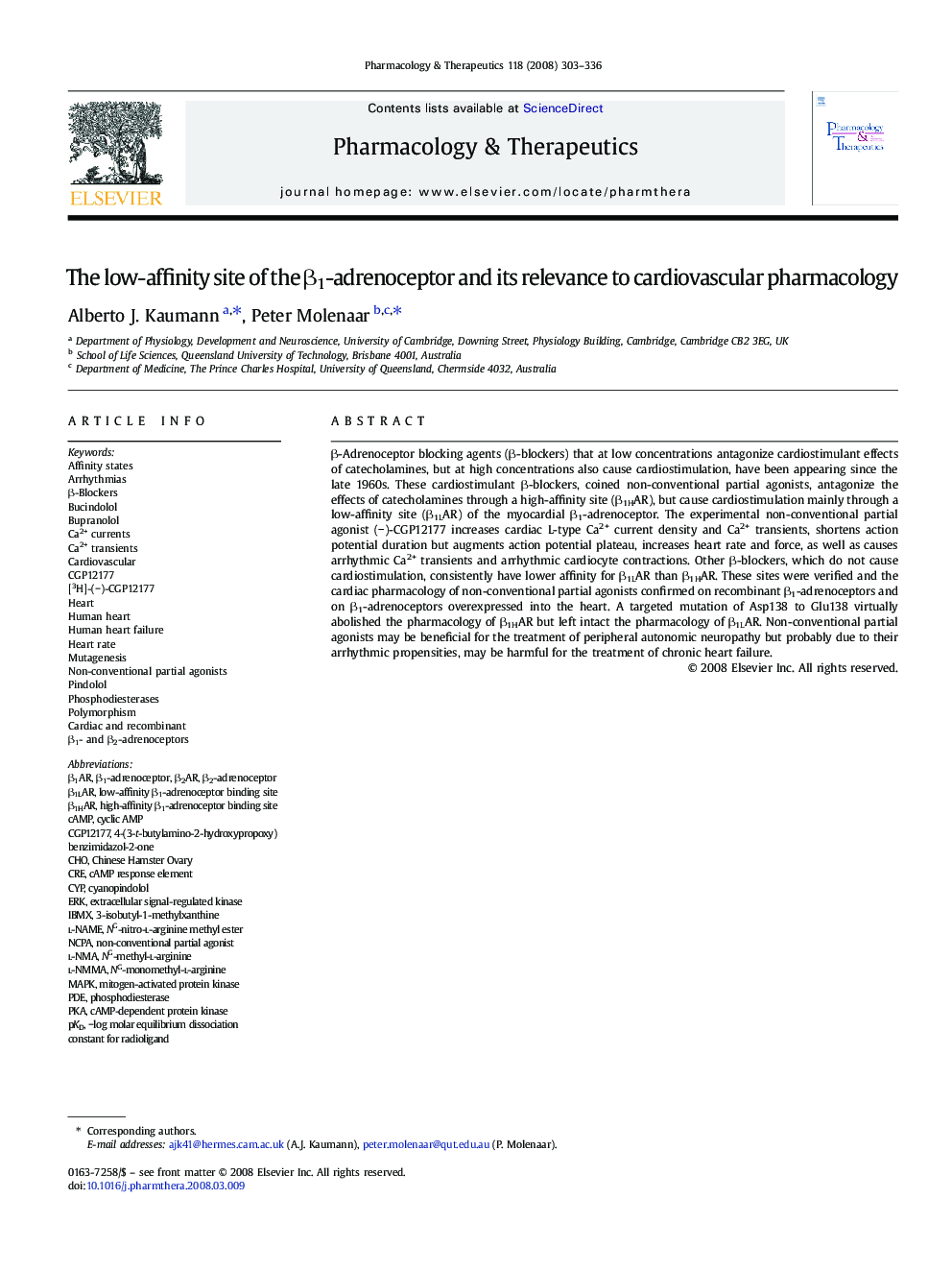| Article ID | Journal | Published Year | Pages | File Type |
|---|---|---|---|---|
| 2564108 | Pharmacology & Therapeutics | 2008 | 34 Pages |
β-Adrenoceptor blocking agents (β-blockers) that at low concentrations antagonize cardiostimulant effects of catecholamines, but at high concentrations also cause cardiostimulation, have been appearing since the late 1960s. These cardiostimulant β-blockers, coined non-conventional partial agonists, antagonize the effects of catecholamines through a high-affinity site (β1HAR), but cause cardiostimulation mainly through a low-affinity site (β1LAR) of the myocardial β1-adrenoceptor. The experimental non-conventional partial agonist (−)-CGP12177 increases cardiac L-type Ca2+ current density and Ca2+ transients, shortens action potential duration but augments action potential plateau, increases heart rate and force, as well as causes arrhythmic Ca2+ transients and arrhythmic cardiocyte contractions. Other β-blockers, which do not cause cardiostimulation, consistently have lower affinity for β1LAR than β1HAR. These sites were verified and the cardiac pharmacology of non-conventional partial agonists confirmed on recombinant β1-adrenoceptors and on β1-adrenoceptors overexpressed into the heart. A targeted mutation of Asp138 to Glu138 virtually abolished the pharmacology of β1HAR but left intact the pharmacology of β1LAR. Non-conventional partial agonists may be beneficial for the treatment of peripheral autonomic neuropathy but probably due to their arrhythmic propensities, may be harmful for the treatment of chronic heart failure.
